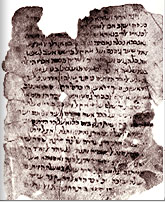|

The Jewish Population in Jerusalem
|
Following the suppression of the Bar Kokhba Revolt (135 CE), Jews were prohibited entry into Jerusalem for about five hundred years, until the Muslim conquest of the city in 638. The sole exception was that in the Byzantine period Jews were allowed to visit the ruins of their Temple upon payment of a fee. The prohibition was imposed in accord with the Christian conception regarding the decline of Judaism following the destruction of the Jewish temple. This period is echoed both in Christian and Karaite sources. |
|
A Jewish chronicle, parts of which have survived in the Cairo Geniza, tells us that caliph `Umar personally granted permission for seventy Jewish families to resettle in Jerusalem after having overheard the Jews bargaining with the Byzantine Patriarch, begging permission for two hundred families to resettle and obtaining from him access for only fifty. Historical sources describe the participation of the Jews in cleaning up the refuse on the Temple Mount, and their help in identifying the location of the Rock. Initially, the Jews were responsible not only for cleaning up the Temple Mount, but also for cleaning the Al-Aqsa Mosque until caliph Umar b. Abd al-Aziz (717-720) replaced the Jews with slaves from the state treasury, accusing the Jews of praying there. Subsequently, the Jews were restricted to praying near one of the Temple Mount gates. |

|


